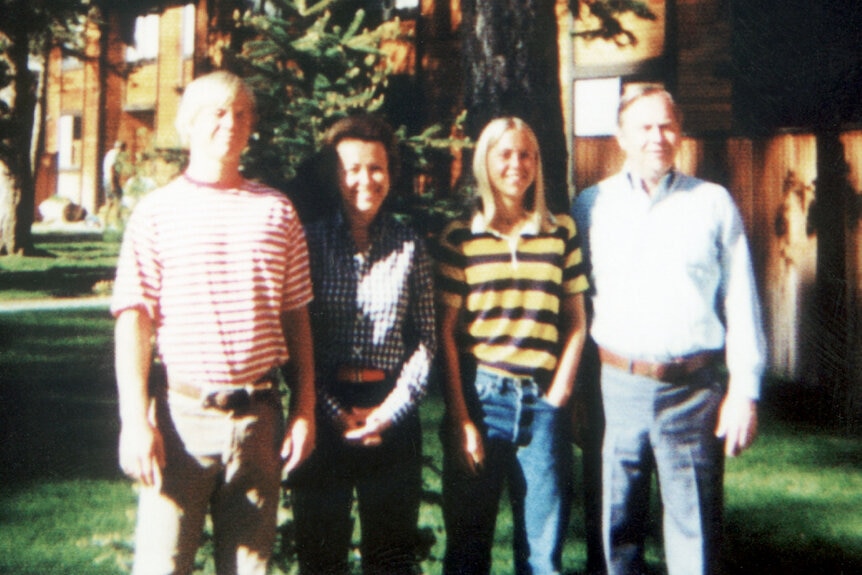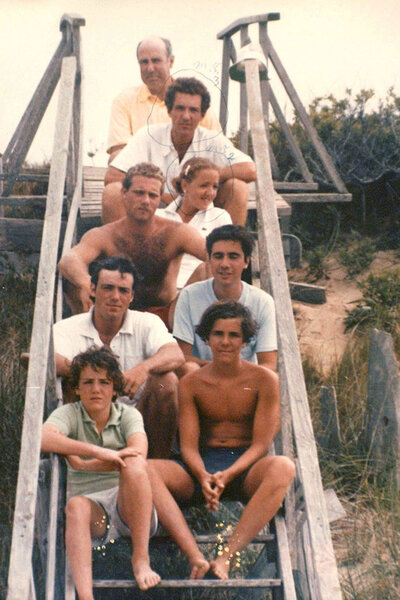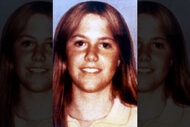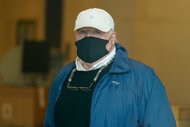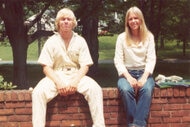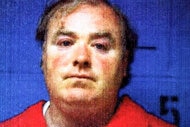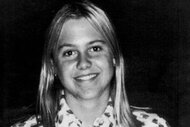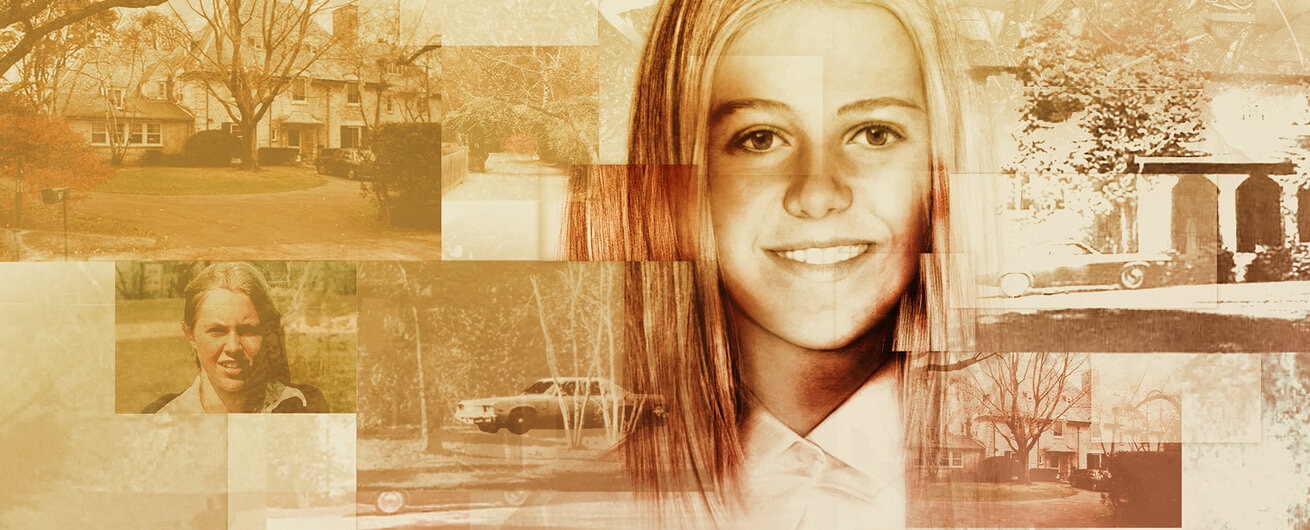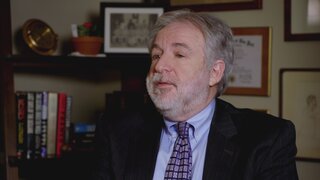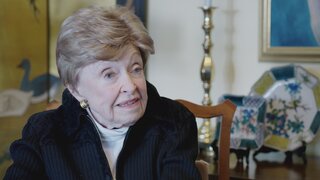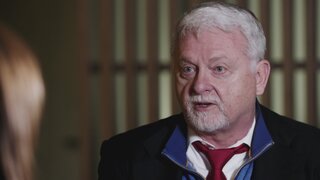Create a free profile to get unlimited access to exclusive videos, breaking news, sweepstakes, and more!
Who Are The Families Entangled In The Martha Moxley Murder Case?
The Moxley and Skakel families were neighbors from the exclusive enclave of Belle Haven, but 15-year-old Martha Moxley’s murder tore them apart.
At the center of the investigation into the 1975 murder of 15-year-old Martha Moxley are two families ripped apart by a brutal tragedy. On one side are the Moxleys, a tight-knit family of four who moved from Northern California to Connecticut’s prestigious enclave of Belle Haven just a year before Martha’s slaying. On the other side are their neighbors the Skakels, related to the Kennedy dynasty by marriage, who did not become truly embroiled in the murder case until almost 20 years after Martha’s death.
In the early 2000s, Michael Skakel, who was also 15 at the time of the killing, was arrested, tried, and found guilty of her murder, but a series of appeals resulted in his conviction being overturned. While Martha’s murder remains unsolved to this day, several members from both the Moxley and Skakel families have spoken out about the case.
Here is a breakdown of those involved in the murder of Martha Moxley:
1. The Moxleys
The Moxley family moved from Piedmont, California, to Greenwich, Connecticut, in the summer of 1974. Martha and her older brother John Moxley, who was 17 at the time, were raised by their mother, Dorthy Moxley, and father, David Moxley. Martha flourished as the new girl in town, and nine months after her arrival, she was voted the most popular girl at Western Junior High School, according to CNN.
John described his sister as “easy to get along with, upbeat, [and] friendly”: “Martha was a person who had everything in the world going for her. She was friendly, she was athletic, she was talented in the arts. Everything seemed to come very easily to Martha.”
Martha was family-oriented and enjoyed spending time at the Moxleys’ home in Belle Haven, an exclusive enclave in southern Greenwich, but she sometimes acted out, occasionally drinking a beer and missing curfew.
Dorthy recounted that their neighbors were “so friendly” and the family was “happy.” While David worked as managing partner of the Touch Ross accounting firm in Manhattan, Dorthy settled into their new home and attended the Belle Haven Club. Martha also spent her summer days at the exclusive country club, swimming in the pool and playing tennis, and her brother joined the football team at Greenwich High School.
The weekend prior to her murder, Martha had stayed out late with her boyfriend, and her parents had grounded her. Dorthy told The Washington Post the only reason she let Martha out of the house the night she was bludgeoned was because it was the night before Halloween, a school holiday.
Martha and her friends spent “Mischief Night” spraying shaving cream on mailboxes before hanging out with her neighbors Michael Skakel, also 15, and Thomas “Tommy” Skakel, 17, outside their home. Tommy said Martha headed back to her house shortly before 10:00 p.m., and that was the last time she was seen alive. When her body was discovered in the family’s backyard the following day beaten and stabbed to death, the Moxleys’ idyllic new life crumbled.
The family has been relentless in their pursuit of justice, and after David died of a sudden heart attack in 1988, Dorthy and John continued to advocate for Martha. During Michael Skakel’s 2002 murder trial, John reflected on the glaring differences between his family and the Skakels.
“[Michael] is like a train wreck. I can't stop looking at him. His whole family seems to be held together by the love of the checkbook. My parents gave my sister and I everything Michael didn't have growing up,” John told the Hartford Courant.
Though Michael’s murder conviction was overturned, Dorthy contended in 2018 there was “no doubt” he killed her daughter, reported The New York Times.
2. The Skakels
Michael Skakel gave the public a glimpse into his family through an unpublished memoir, “Dead Man Talking: A Kennedy Cousin Comes Clean,” which he shopped around to publishers in 1998 and promised to be “the first account by an insider of the avarice, perversion, and gangsterism of ‘America’s Royal Family.’”
Michael was primarily raised by his father, Rushton Skakel, the brother of Ethel Kennedy and head of Great Lakes Carbon, in Belle Haven, an enclave Michael claimed had “corrupted values and toxic lessons,” reported CNN. His mother, Anne Skakel, died of cancer in 1973, and chaos soon engulfed their household.
According to an attorney for the Skakel family, Rushton was an alcoholic who was rarely home, and he often left Michael and his six siblings in the care of relatives, friends, employees, and live-in tutors. Friends said the home was filled with alcohol, drugs, and sibling rivalries.
“I became a full-blown daily-drinking alcoholic by the time I was thirteen,” wrote Michael, adding that his father’s lectures escalated to “beatings” with his brother Tommy following suit, “bullying and terrorizing me with my father’s tacit consent.”
At the start of the Martha Moxley investigation, Tommy was questioned by police — along with the Skakel’s live-in tutor, Kenneth Littleton — and given a lie detector test, which he passed. The golf club used in Martha’s slaying was traced back to a set owned by the Skakels, but no physical evidence linked anyone in the family to the crime.
Following an arrest for drunken driving, Michael enrolled at Elan School in Poland Spring, Maine, which treats children with substance abuse problems, to avoid prosecution. He then attended several rehab centers and became sober in his mid-20s, reported CNN.
Michael pursued various hobbies and careers, and in 1994, he worked as an aide to Senator Edward Kennedy’s re-election campaign. He eventually married golf pro Margot Sheridan, and the couple had one child.
In 1997, things started falling apart at home — a major rift formed between him and his family when Michael spoke with law enforcement regarding his cousin Michael Kennedy’s alleged affair with his teenage babysitter.
But in regard to the Moxley case, Michael did not become a suspect until 1991, when Greenwich police reopened the case after decades of dead-end leads, reported Len Levitt, author of “Conviction: Solving the Moxley Murder.”
In January 2000, Michael was arrested. Shortly after the indictment, his wife filed for a divorce, which was finalized in 2001. Michael was then tried, found guilty, and sentenced between 20 years to life in prison for Martha’s murder, reported NBC News. A series of appeals, however, resulted in Skakel’s conviction being overturned in 2018. To this day, he maintains his innocence, and the State has not announced if it will pursue another trial.
3. The Kennedys
While the Kennedy family was never directly legally involved with Michael Skakel’s investigation and trial, both his cousin, Robert F. Kennedy, Jr., and his aunt, Ethel Kennedy, wrote letters begging for leniency during Michael’s sentencing. Robert portrayed Michael as a “small sensitive child — the runt of the litter with a harsh and occasionally violent alcoholic father who both ignored and abused him,” and recalled how he was sent to Elan School where he was “beaten, tortured and brutalized.”
“Many people might be poisoned by resentments after such agonizing experiences,” wrote Robert. “Michael has never given in to bitterness. Instead, he has used these episodes to help and heal others.”
Ethel, the widow of Robert F. Kennedy, wrote that Michael had overcome his turbulent childhood and alcohol addiction with “mental toughness, fortitude, courage and tenacity,” and highlighted his “sweetness, kindness, good cheer and love of life.”
She signed the letter, “Out of the depths, but with hope, Ethel Kennedy.”
Following Michael’s sentencing, Robert, an environmental lawyer and former prosecutor, published a 15,000-word essay in The Atlantic’s January/February 2013 issue titled “A Miscarriage of Justice.” The article claimed Michael was innocent and argued the state’s case against Kenneth Littleton, the Skakels’ live-in tutor at the time and former suspect, was stronger than the case against Michael. Littleton has never been charged with Martha’s murder and maintains he had no involvement.
In 2016, Robert continued to advocate for Michael and published “Framed: Why Michael Skakel Spent Over a Decade in Prison for a Murder He Didn’t Commit.” The book attempted to clear Michael’s name and claimed that two Bronx teenagers at the time were the ones responsible for Martha’s murder. Neither of the men Robert identified have been charged in connection with the case, and both have maintained their innocence.
To learn more about the infamous Greenwich slaying, watch “Murder and Justice: The Case of Martha Moxley,” a three-part event series airing Saturdays at 7/6c on Oxygen.




